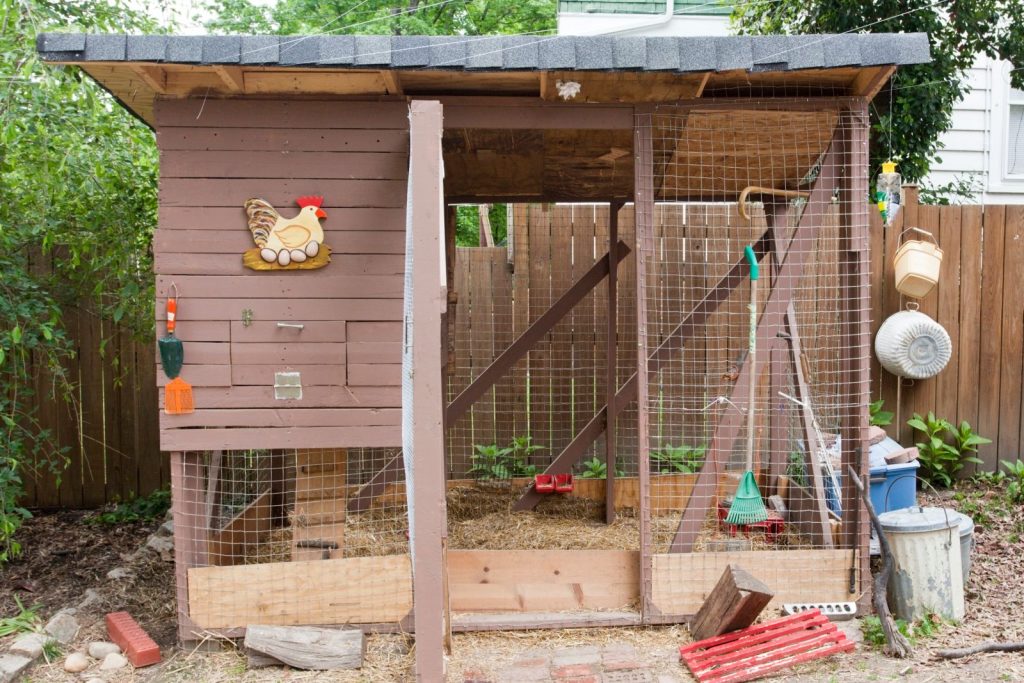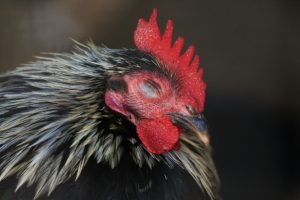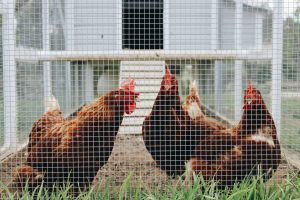Tired of constantly cleaning your chicken coop? Nature has a better way. The deep litter method turns your chickens’ natural scratching behavior into a self-maintaining system that’s easier on your back and better for your garden. Best of all? Your chickens will do most of the work.
How It Actually Works
Think of the deep litter method as your chickens’ version of composting. Instead of cleaning out the coop every week, you’ll add kitchen scraps, garden waste, and fresh bedding material on top of the existing layer. Your chickens, always eager to find treats, will scratch through the layers looking for food. This natural scratching mixes everything together and aerates the bedding – exactly what you need for healthy composting.
Benefits for your Flock and Budget
The deep litter method offers several advantages that make it particularly appealing for chicken keepers:
- Reduced maintenance time and effort: Rather than weekly deep cleanings, you’ll spend just 1-5 minutes adding fresh kitchen scraps, garden waste, bedding every couple of days. Perfect for busy chicken keepers or those who want to minimize bending and lifting.
- Natural warmth in winter: As the bedding decomposes, it generates subtle heat – think of it as a natural heating pad for your chickens during cold months. This process can raise coop temperatures by 2-4 degrees Fahrenheit.
- Cost savings on bedding: You’ll use about 30-40% less bedding material over the year compared to weekly clean-outs, saving $50-75 annually for a typical backyard coop.
- Natural immunity boost: The beneficial bacteria that develop in deep litter help strengthen your chickens’ immune systems, potentially reducing vet visits and medication needs.
How to Get Started
Start with a clean coop floor and add a generous base layer of bedding – about 4-6 inches deep. You can use whatever bedding material you prefer or have easily available. Straw, grass clippings, pine shavings, or fallen leaves all work great as your base layer.
Here’s where the magic starts: scatter some kitchen scraps and garden waste throughout the bedding. Your chickens will immediately start scratching through the bedding looking for these treats. They’re not just getting a snack – they’re doing the important work of turning and mixing the bedding for you.

Deep Litter Maintenance
Every other day or so (at least twice a week), toss some kitchen scraps and garden waste into different areas of the coop. Spreading the treats around encourages your chickens to work the entire floor space. They’ll scratch and turn the bedding while hunting for goodies, doing exactly what the deep litter method needs.
What can you add to the coop?
Pretty much any kitchen scraps your chickens would normally eat:
- Vegetable peelings and scraps
- Leafy greens past their prime
- Fruit and vegetable trimmings
- Stale bread or grains
Garden waste works great too:
- Fresh grass clippings
- Pulled weeds (ideally before they go to seed)
- Dead leaves
- Garden trimmings
Why the Deep Litter Method Makes Sense
The deep litter method isn’t just easier – it creates a healthier environment for your flock. As the bedding breaks down, it develops beneficial bacteria that actually help strengthen your chickens’ immune systems. In winter, the slowly composting bedding generates a small amount of heat, helping keep your coop warmer naturally.
Your garden benefits too. When you clean out the coop in spring and fall, you’ll have beautiful, rich compost ready for your garden beds. It’s perfect timing for the main planting seasons, and you’ll notice the difference in your vegetables and flowers.
When to Clean Out
Plan for a complete cleanout once or twice per year, typically in spring and fall. The resulting compost is perfect for your garden beds – an added bonus that your tomatoes and cucumbers will love.
Keeping Things Running Smoothly: Troubleshooting
Good ventilation is crucial for this method to work well. Your coop needs airflow above chicken height to manage moisture and prevent ammonia buildup. Don’t worry about drafts at chicken level – just make sure there’s good air movement up high.
The bedding should feel like a barely damp sponge when you squeeze it. If it’s too wet:
- Check for leaky waterers or roof drips
- Add more dry bedding material
- Make sure your ventilation is working well
If you notice any strong ammonia smell:
- Add a fresh layer of dry bedding right away
- Double-check your ventilation
- Consider sprinkling some garden lime on top
Seasonal Adjustments
When summer arrives, your chickens might spend less time scratching in the coop. That’s perfectly fine – just keep adding fresh material as needed and let the system do its work. In winter, when your flock spends more time indoors, you might need to add dry bedding more often. Let the bedding build up a bit deeper in cold weather – 8-12 inches is ideal for natural insulation.
Making the Switch
Ready to try the deep litter method? Start with one section of your coop if you’re unsure. Add your base layer and begin the daily habit of spreading kitchen scraps and garden waste. Watch how your chickens respond – they’ll quickly show you they understand what to do. Within a few weeks, you’ll have a naturally working system that makes coop maintenance easier while creating valuable compost for your garden.






0 Comments